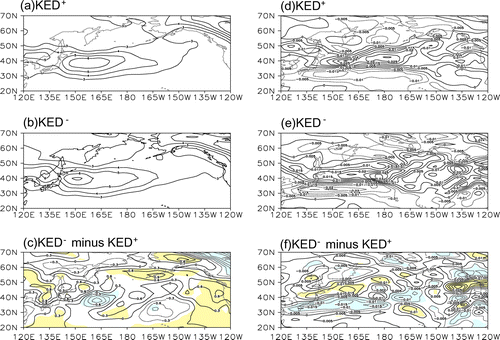Figures & data
Figure 1. (a, b) Spatial patterns of the (a) EOF1 and (b) EOF2 of the SLA anomalies (units: m). (c, d) The corresponding normalized time coefficients ((c) PC1 and (d) PC2) for the EOF1 and EOF2 of the SLA anomalies. (e, f) Composite distributions of the SSH anomalies of the (e) KED+ mode and (f) KED− mode (units: m). (g) Time series of normalized monthly mean KED index from January 1993 to December 2015. The red thick line denotes the 11-month smoothing curve.
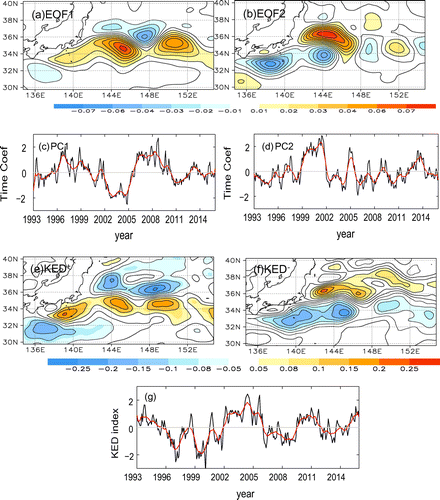
Figure 2. (a–c) Composite distributions of oceanic SST for the months of the (a) KED+ mode, (b) KED− mode, and (c) the KED− minus KED+ difference (units: °C). (d–f) Composite distributions of oceanic SST gradient for the months of the (d) KED+ mode, (e) KED− mode, and (f) the KED− minus KED+ difference (units: °C/100 km). Areas within red contours are statistically significant at the greater than 90% confidence level based on a two-sided Student’s t-test.
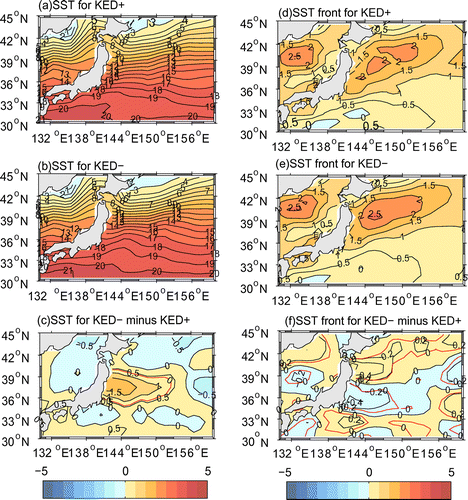
Figure 3. Time series of normalized winter monthly mean (a) NSST front strength, (b) KSST front strength, and (c) the KSST minus NSST differences, during the period 1993–2015. Black thick lines denote the KED index.
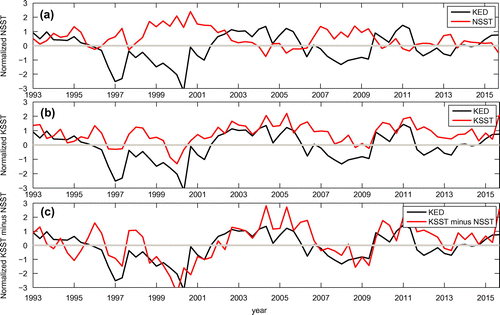
Figure 4. (a, b) Composite distributions of the 300-hPa EKE of the (a) KED+ mode, (b) KED− mode, and (c) the KED− minus KED+ differences (units: m2 s−2). (d–f) Composite distributions of the 300-hPa westerly jet of the (d) KED+ mode, (e) KED− mode, and (f) the KED− minus KED+ difference (units: m s−1). Shading denotes the 95% confidence level for a two-sided Student’s t-test.
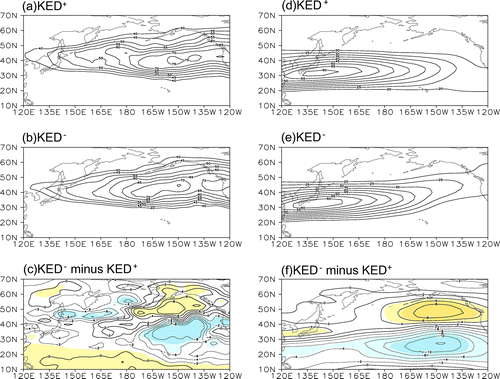
Figure 5. (a, b) Composite distributions of the 850-hPa meridional eddy heat flux of the (a) KED+ mode, (b) KED− mode, and (c) the KED− minus KED+ differences (units: K (m s−1)−1). (d–f) Composite distributions of gradient of the 300-hPa meridional momentum flux of the (d) KED+ mode, (e) KED− mode, and (f) the KED− minus KED+ differences (units: m s−2). Shading denotes the 95% confidence level for a two-sided Student’s t-test.
